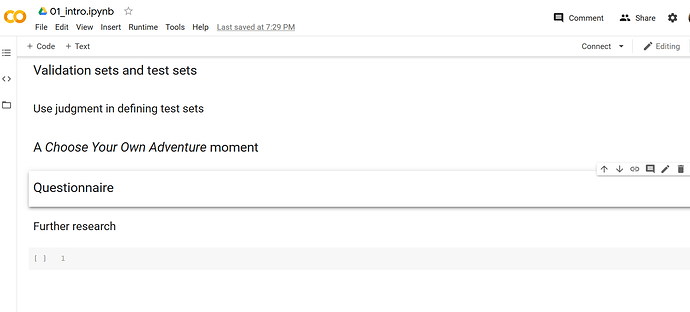I was talking about the GPUs used for submitting to Kaggle. Definitely we can try. If you have any ideas on how we an colloborate, we can srart.
If in doubt - the answer is probably “yes” ![]()
Thanks Jeremy. @VishnuSubramanian @barnacl
Let’s take this discussion to https://forums.fast.ai/t/datablocks-api-examples/66204 
Count on my, I am also interested in learning datablock API
I was going thru documentation for untar_data and had question for below line
“Internally, if files are not available at fname location already which defaults to ~/.fastai/archive/ , the files get downloaded at ~/.fastai/archive and are then extracted at dest location. If no dest is passed the default_dest to download the files is ~/.fastai/data . If files are already available at the fname location but not available then a symbolic link is created for each file from fname location to dest .”
Q. why dest defaults to ‘~/.fastai/data’ and fname defaults to ‘~/.fastai/archive/’ ?
As the function does download files from url to dest, then why it does lookup at fname location. we can simply check whether it’s present at dest.
Might be a silly question but why is it called the head of a model? These are the last layers, so I would think of it more as a tail.
how i read the func - when downloading, we’re usually downloading a zip. the zip files are archived, and unzipped to fname. we check the archive when downloading because we’re comparing the downloaded zip to the zip at the url, instead of the extracted file to the zip at the url.
I’ve created a summary and review thread containing: [Podcast + Writeup] Summaries + Things Jeremy Says to do + Qs and Unofficial Lecture 1 Notes
Both are Added & Linked in the Wiki.
When thinking of models reverse how you would normally describe them. The body is the bottom and the head is the top. Sorta like a tree and it’s roots, or even a person.
I think of it as a pyramid. Base is the largest (your input image), head is the top ![]()
Can you share tips for navigating the fastai code?
Do you have a local checkout of fastai and open notebooks from there? Did you load the generated python code into an IDE? Do you rely on doc() function and links to the source on github?
I tried the last option but I quickly end up with a mess of tabs open to github, dev.fastai and fastcore.fast.ai.
Also I’d like to take an advantage of the the fact that everything is a notebook, but I couldn’t find a good way for navigating through the library, other than grepping for the symbol I want, or matching the doc page with the notebook filename. And again an explosion of open tabs, this time to jupyter notebooks.
https://forums.fast.ai/t/source-code-mid-level-api/65755/181 some discussion over here. VSCode, vim … options 
Hi,
I don’t seem to have the questions listed in the Questionnaire section. Can someone please share the link with the correct notebook? ---- I will pick it up from the github Fastbook page.
@ilovescience is making threads with each,a long with their answers ![]()
Thanks @muellerzr. I am not sure if I have the right notebook with me as the questions are missing.
Check the GitHub repo when in doubt (it has the questions)
Yup. Will pick it up from there. Thanks
If I listened to the stream correctly, @jeremy mentioned the course follows the book.
Does it mean fastbook covers part1-v4 only or does it cover both part1-v4 + part2-v4 (upcoming)?
Also, what do you think of this strategy? Read chapter 2 before lesson2, read chapter 3 before lesson 3, and so on and so forth…
Thanks!
So it seems people are recommending consuming the generated Python code rather than the notebooks/docs. I’ll go back to that then.
Just asked him, here is his answer:
Part 1 and Part 2 will both be from the book, we’ll try to cover all of it time permitting. Part 2 will probably include other parts as well as there’s more chapters we’re still wanting to write (online chapters) and possibly look into Object Detection, audio etc
